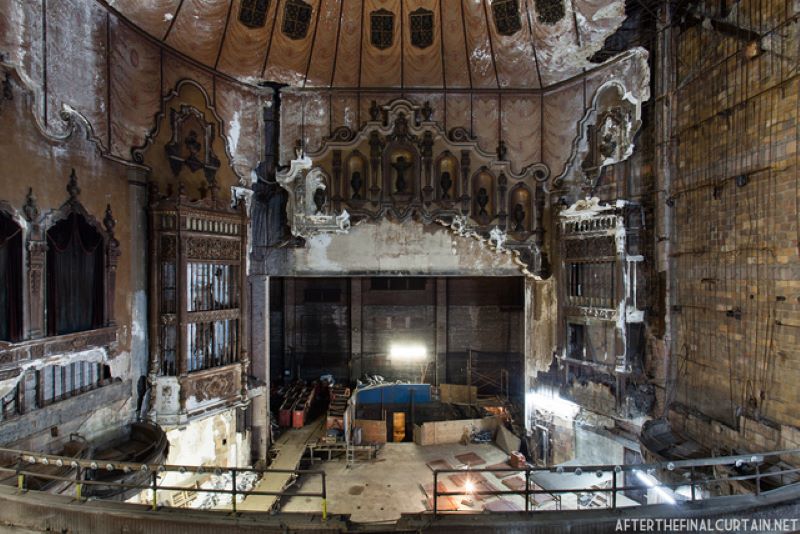9. Loew’s Canal Theatre

The Loew’s Canal Theatre at 31 Canal Street was built in 1927 and has been closed since the 1950s. When it opened, it was the second-largest theater in New York City with 2,314 seats. Loew’s eventually sold it to Greater M&S Circuit, but it didn’t survive long as it went bankrupt in 1929, and was bought back by Loew’s the same year. The Canal was designed by Thomas Lamb, who designed many of the forgotten theaters of Upper Broadway and showed mostly “B” movies and serials. Loew’s Canal Theatre was a popular theater for the local Jewish community, selling tickets for affordable prices and showcasing films relevant to the community. Loew’s also showcased some Yiddish productions and hosted events for the Jewish community, as did the nearby Grand Theatre, “the first theatre in America built for the express purpose of housing Yiddish productions.”
On September 10, 1932, both the Canal and the 46th St theatres were rocked by explosions set off by bombs. The attack was believed to be connected to the Motion Pictures Operators’ Union Local 306 who were on strike at the time. The theater recovered with minimal damage, but after closing in the 1950s, the lobby was converted into a retail space with the auditorium as warehouse space. The Canal Theatre has been abandoned since the early 2000s. The interior has been left to decay, but its terra cotta facade remains protected. In February 2015, artists 2ESASE of art collective UR New York and artists SKI created Art Deco-inspired posters that featured figures from the 1920s and hung them throughout the building.





